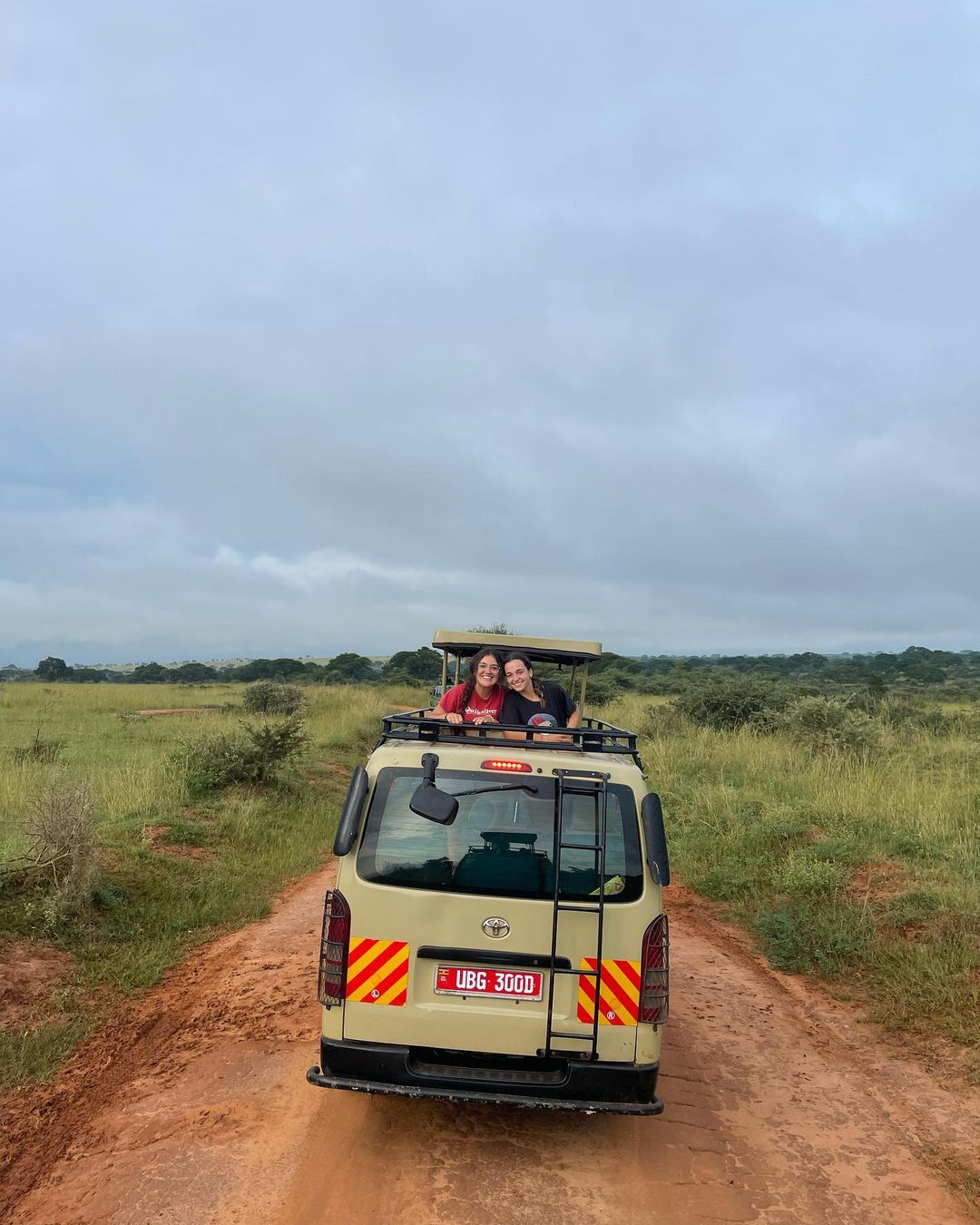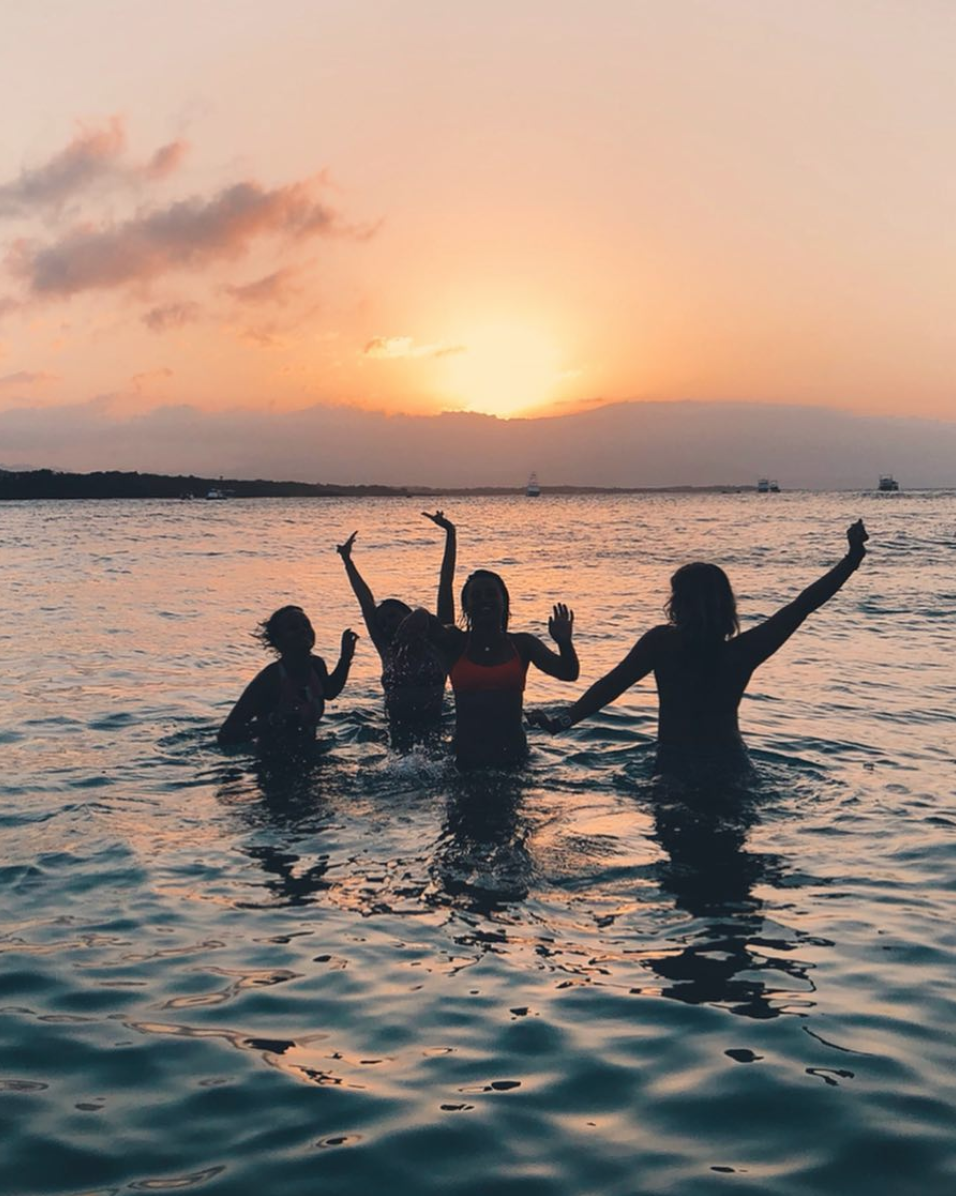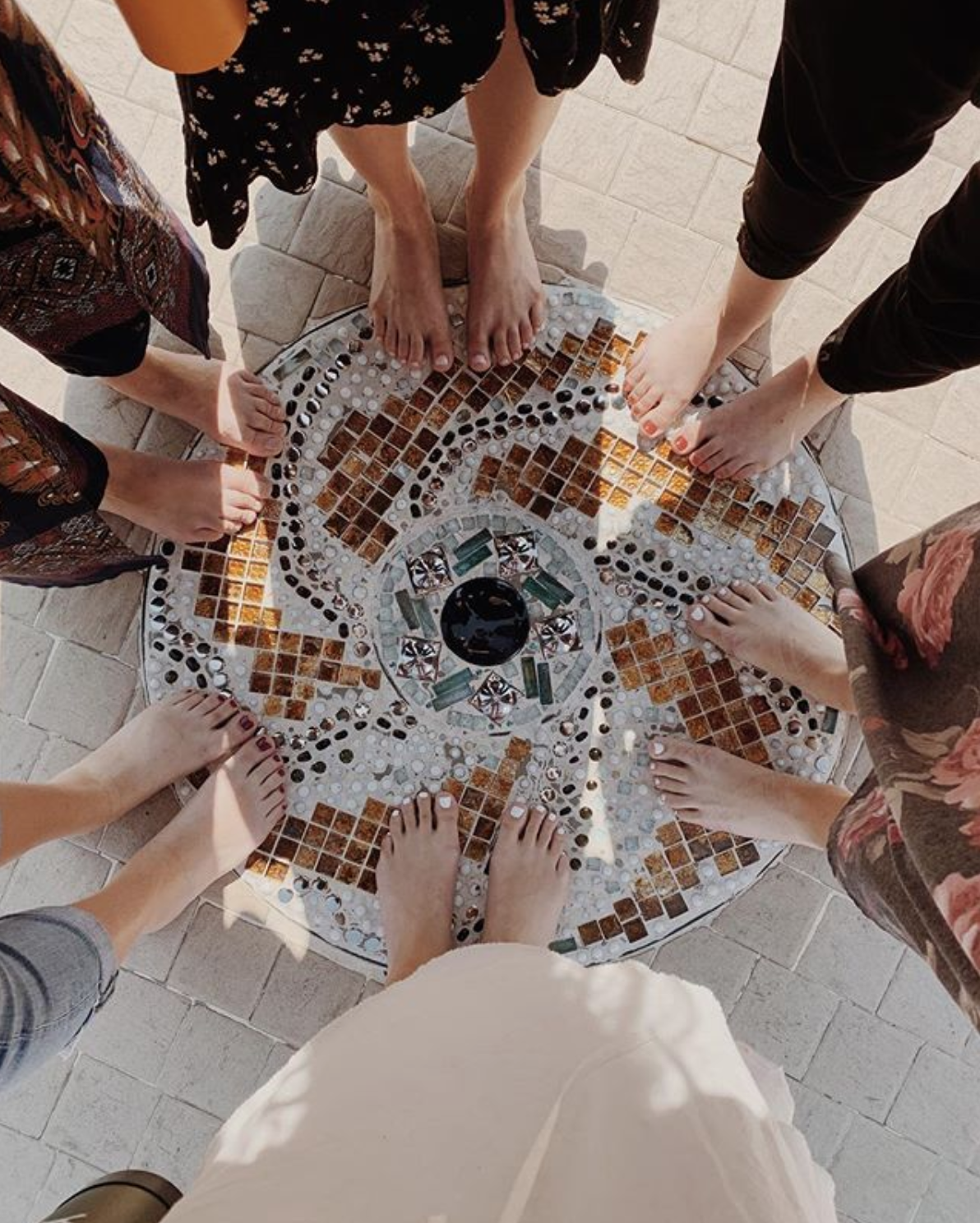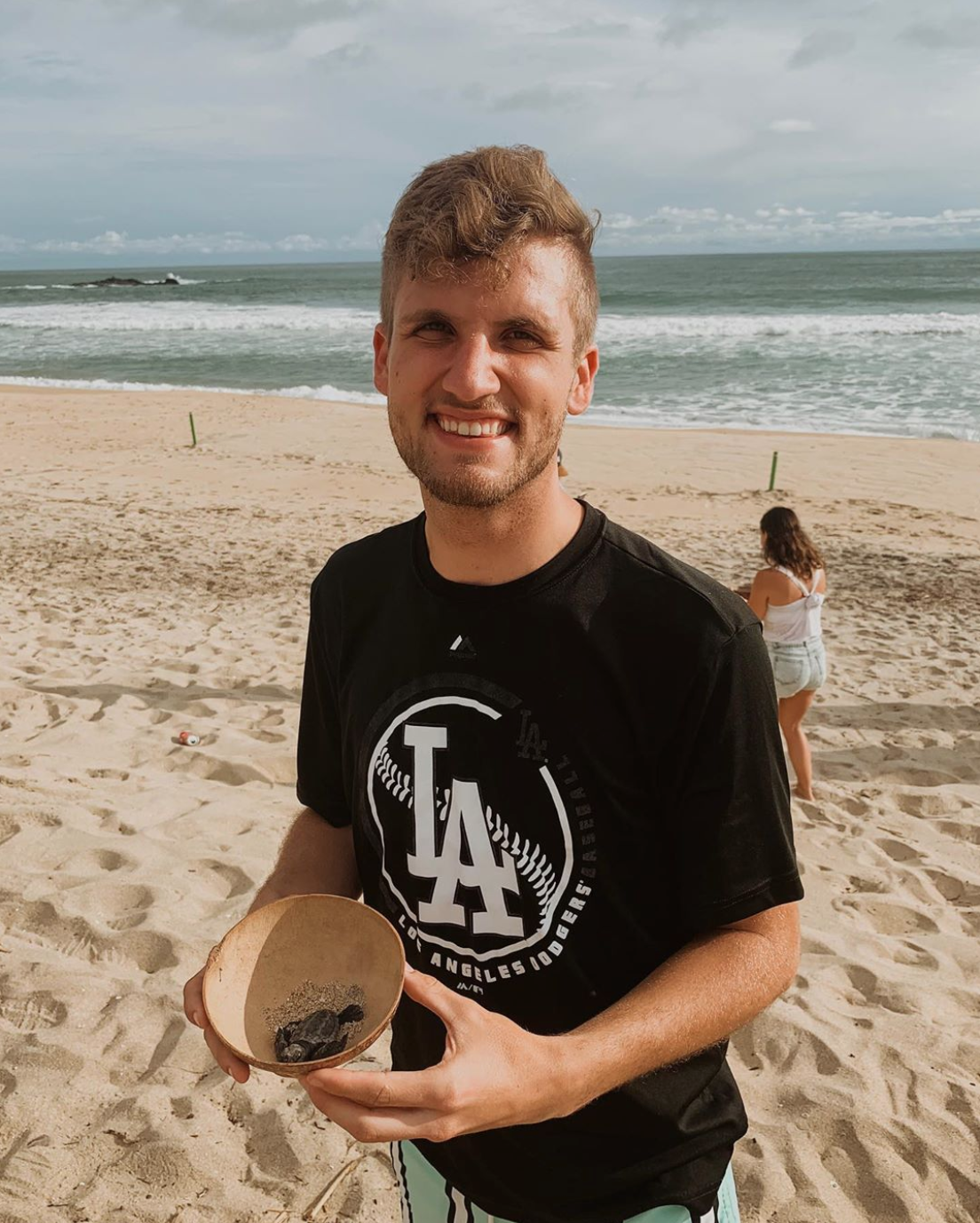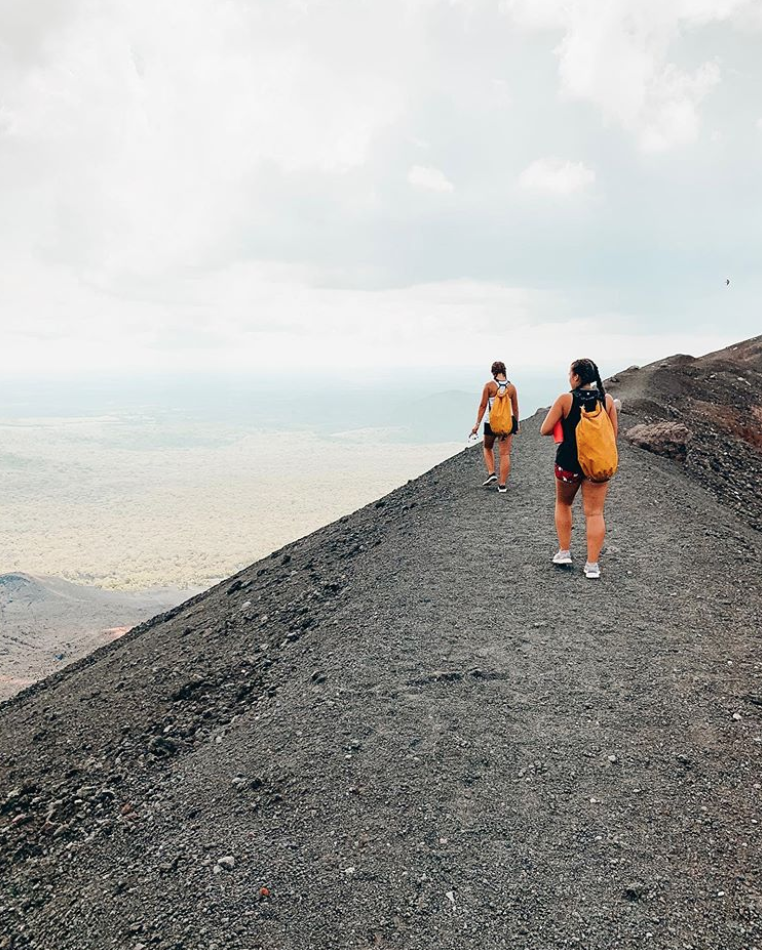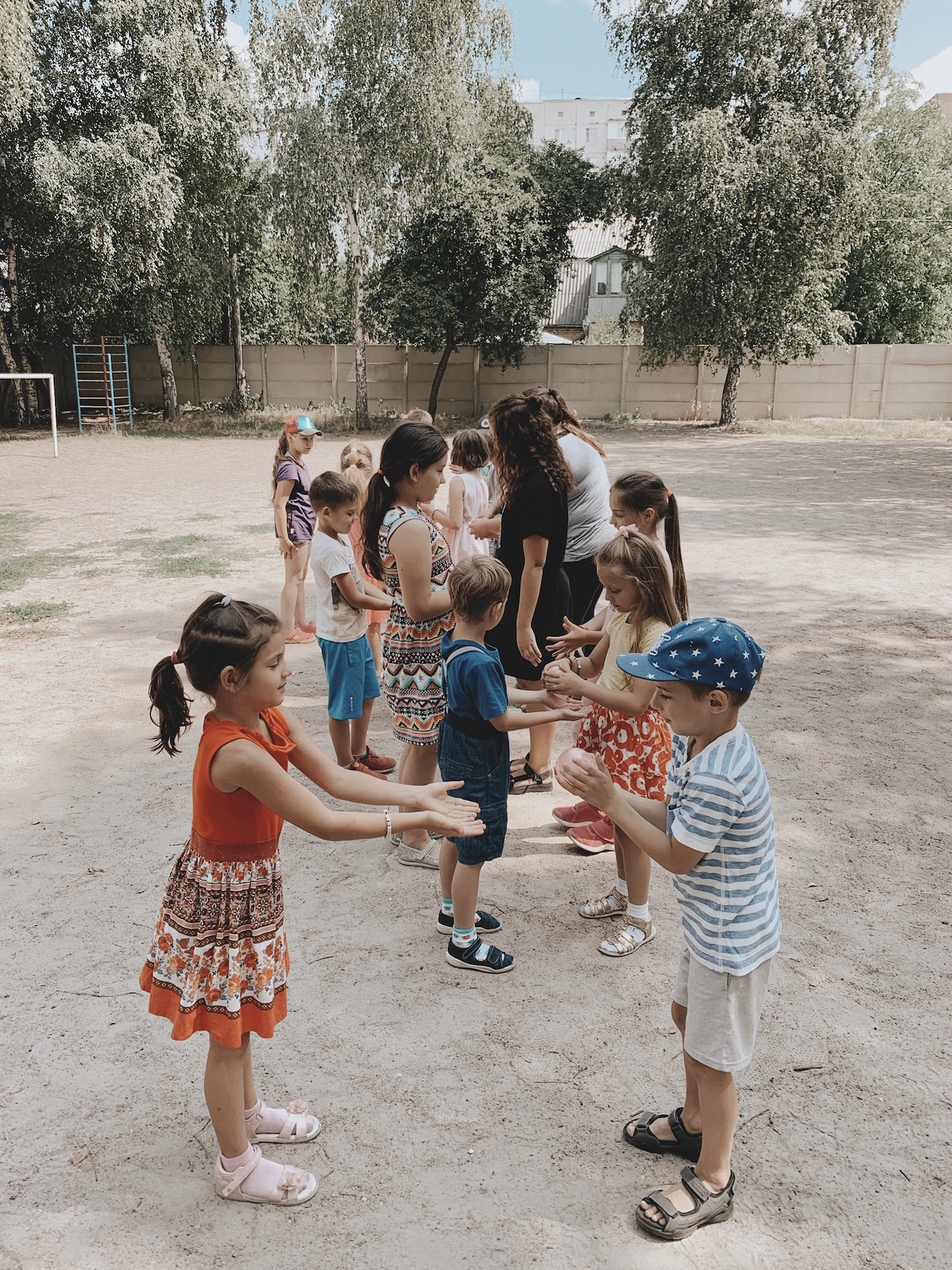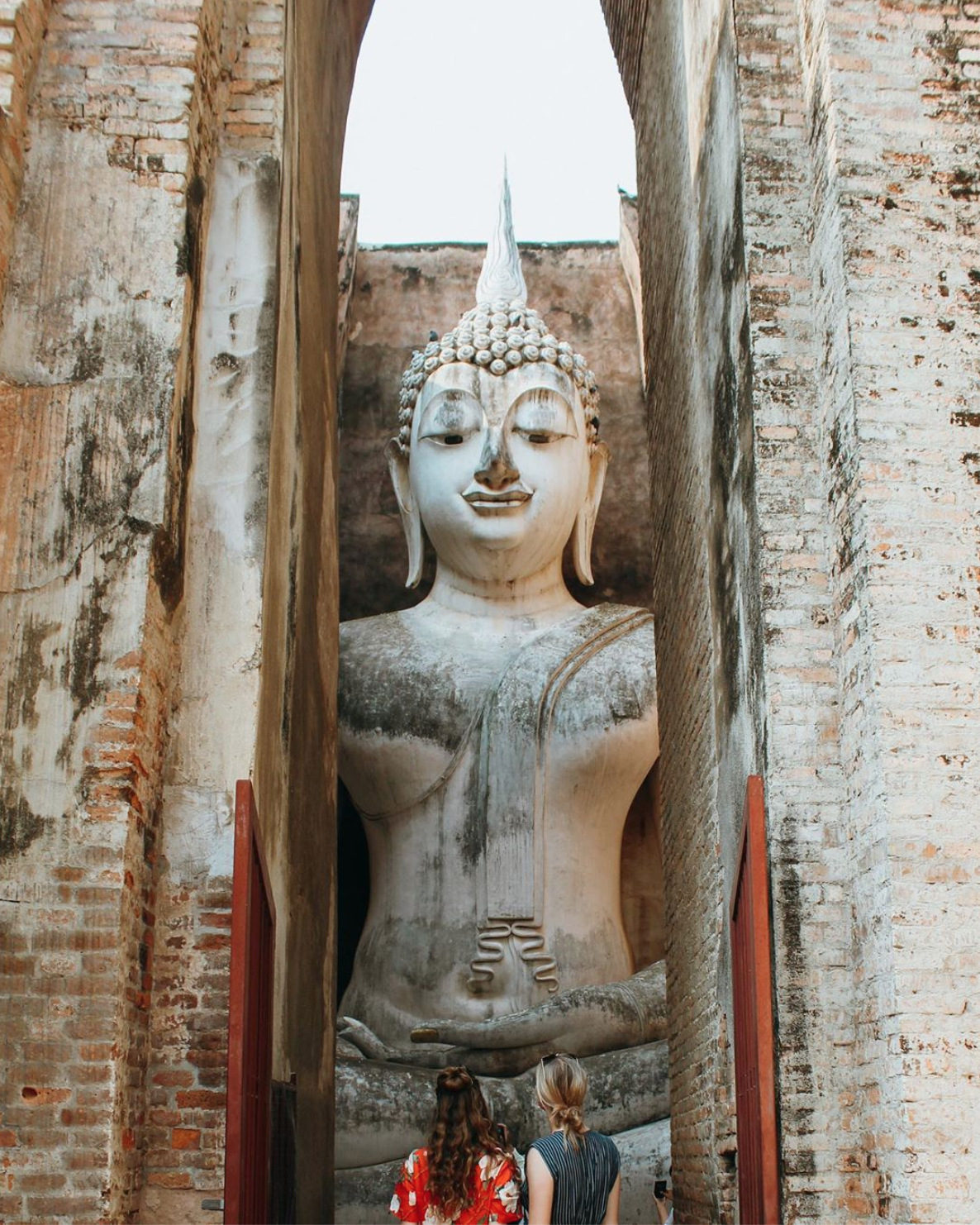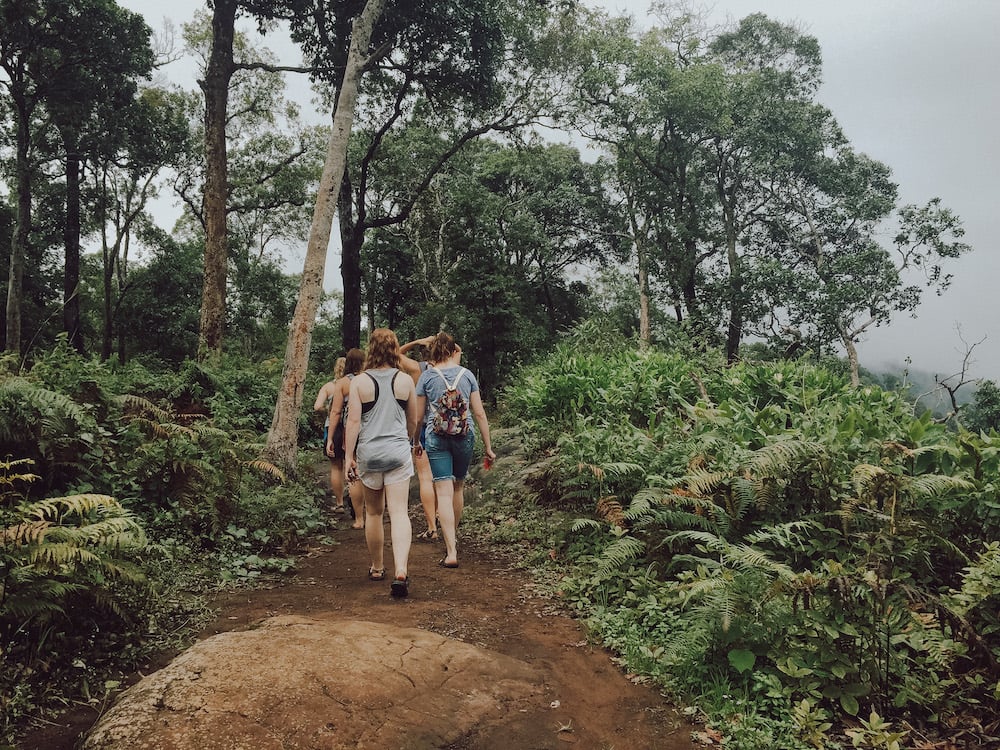
Untold chapters of history, tiered waterfalls, and a landscape that will make you feel like you're walking on the moon can be found in central Thailand in this National Park.
If you have the chance to go to Thailand, take it. This country is very much what you're expecting: warm, humid weather with towering historical ruins to bike through, islands to visit, and elephant-filled jungles. You can get a pretty good taste of the highlights on a quick trip, but you'll need to stay much longer if you want to really explore what this country has to offer! Our volunteers who spend a semester living in Thailand are here long enough to venture into the corners that are more of a local's secret, like the Phu Hin Rong Kla National Park.
Like the idea of living in Thailand?
See way more than you could as a tourist when you volunteer here instead!
We're sharing all about Phu Hin Rong Kla park along with details to help you plan your visit there if you find yourself near Phitsnaulok and want to do some serious exploring, see some incredible viewpoints, photograph fields of wildflowers, and step back into history.
First Off, Know The History
I'm a big fan of learning the background of anything you're about to see on your trip, but this mini history lesson is particularly necessary before visiting Phu Hin Rong Kla. The remote location and rugged terrain of this forest made it the perfect stronghold for the CPT: the Communist Party of Thailand. This beautiful mountain area was the location of several stop-and-go battles during the 1970s in Thailand until the CPT was finally defeated in 1982, and the space was established as a national park just two years later. The reason this historical background is so important is to give you a little context to what you'll see in the park — even today, there are still crumbling remnants of soldier barracks, the old headquarters of the CPT, and the towering Flag Pole Cliff where the flag once flew.
Besides these reminders, the park has settled back to the stretch of dense forest and unique cliffs that seem more at home in a national park. Since the bombs and battles ceased, animals have returned to the area (the thick tree cover is an ideal home for monkeys, several frogs, geckos, and newts, Asiatic bears, and an elusive leopard or two has been spotted here in years past). Hundreds of bird species also call the treetops and forest floor home. Maybe you'll be lucky enough to spot owls, eagles, woodpeckers, cuckoos, pheasants, and more.
Things To See In The Park
The main pull to this park is to do a little hiking, learn more about the CPT history, and visit the waterfall nearby (plus take a few pictures by these really unique rock slabs).
CPT Remnants
The park is scattered with buildings and reminders of the CPT that are open to visitors. If you're interested in seeing them, I'd first start with the Battle Museum (found next to the park office). There's limited signage in English, but you can view a spread of weapons, medical tools, and Communist propaganda in the museum.
You can also head to the Political and Military school, which is where you'll find the maple trees (more on that below). There's a collection of structures used for military planning and education, without any electricity or plumbing (which gives you a glimpse into the remote nature of the conditions). Now, the wooden buildings are slowly being overtaken by moss, which deepens the serene (and slightly ominous) feeling and atmosphere of your visit. Nearby is a water turbine and a small waterfall as well. Get info on the location and details at the visitor's center — it's a 2-ish mile hike to get here from the visitor's center.
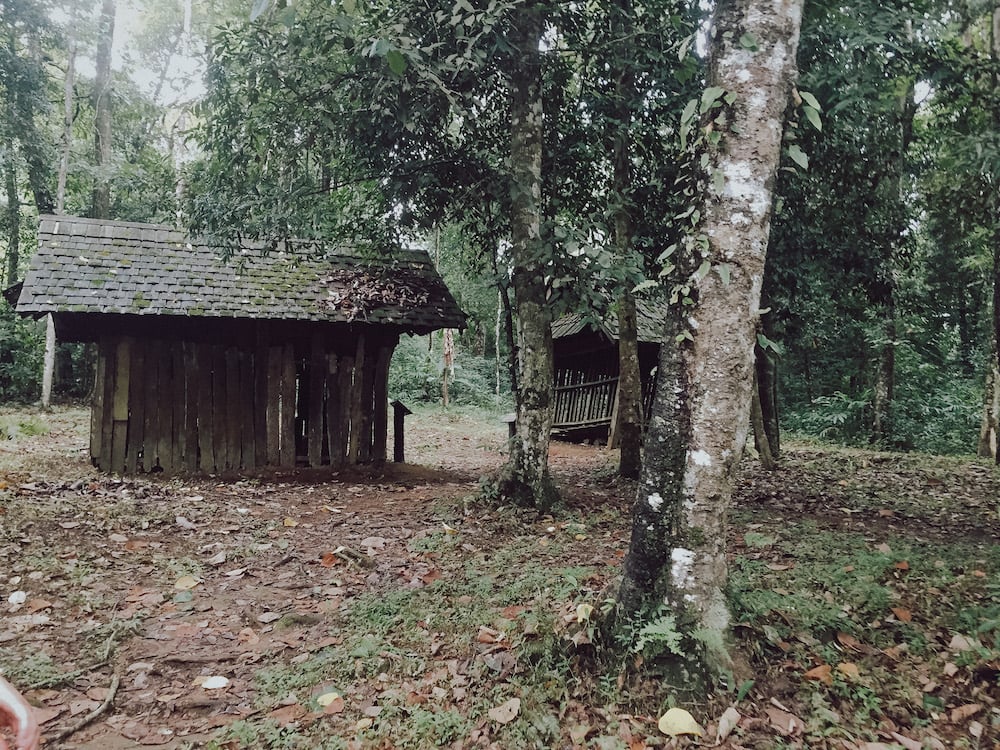
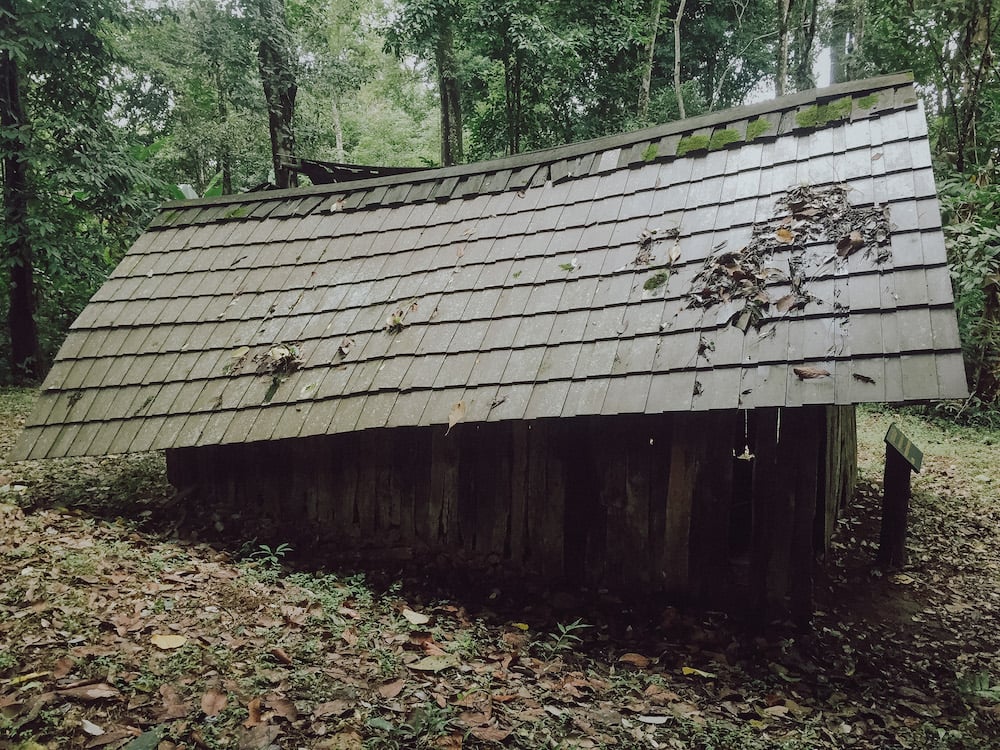
Lan Hin Taek Viewpoint
This viewpoint is one of the main attractions of the park, surrounded by a bit of mystery. For some reason, the rocks here have rippled and created deep cracks and varying valleys that spread out over a plateau. They're almost like these natural round stepping stones bubbling up from the earth that create your path. It's so unique that you almost feel like you're walking on another planet! Some believe tectonic plates caused the unique phenomenon, but it doesn't seem to answer the question fully which just adds to the mystery.
Find the trailhead about a 5-10 minute walk from the park's visitor center (it's not a long hike).
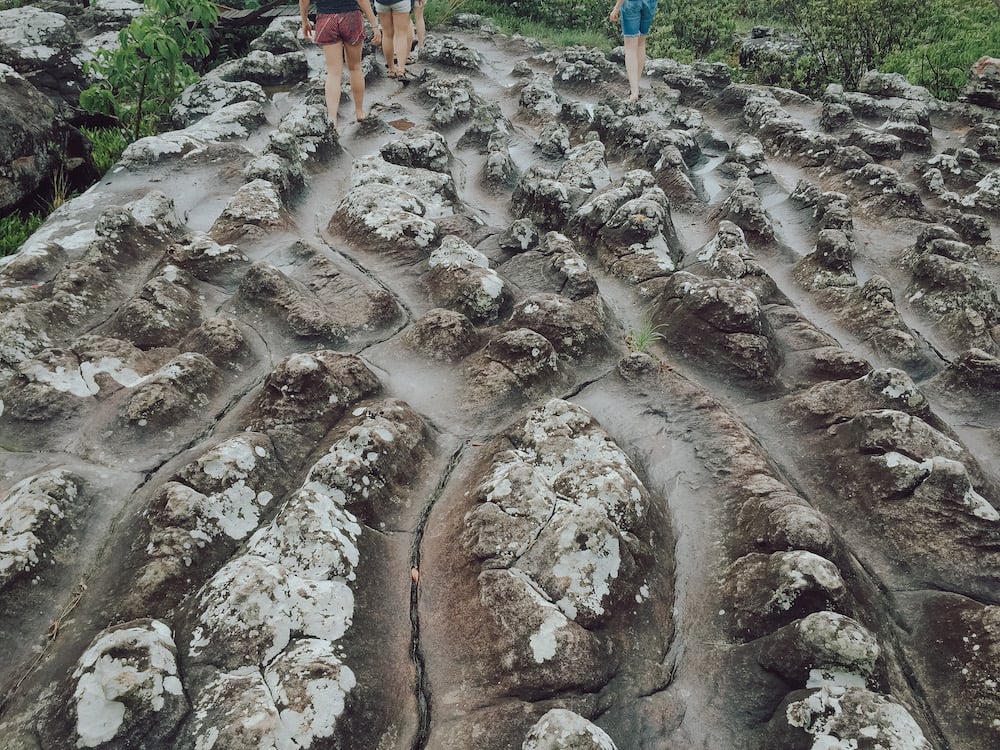
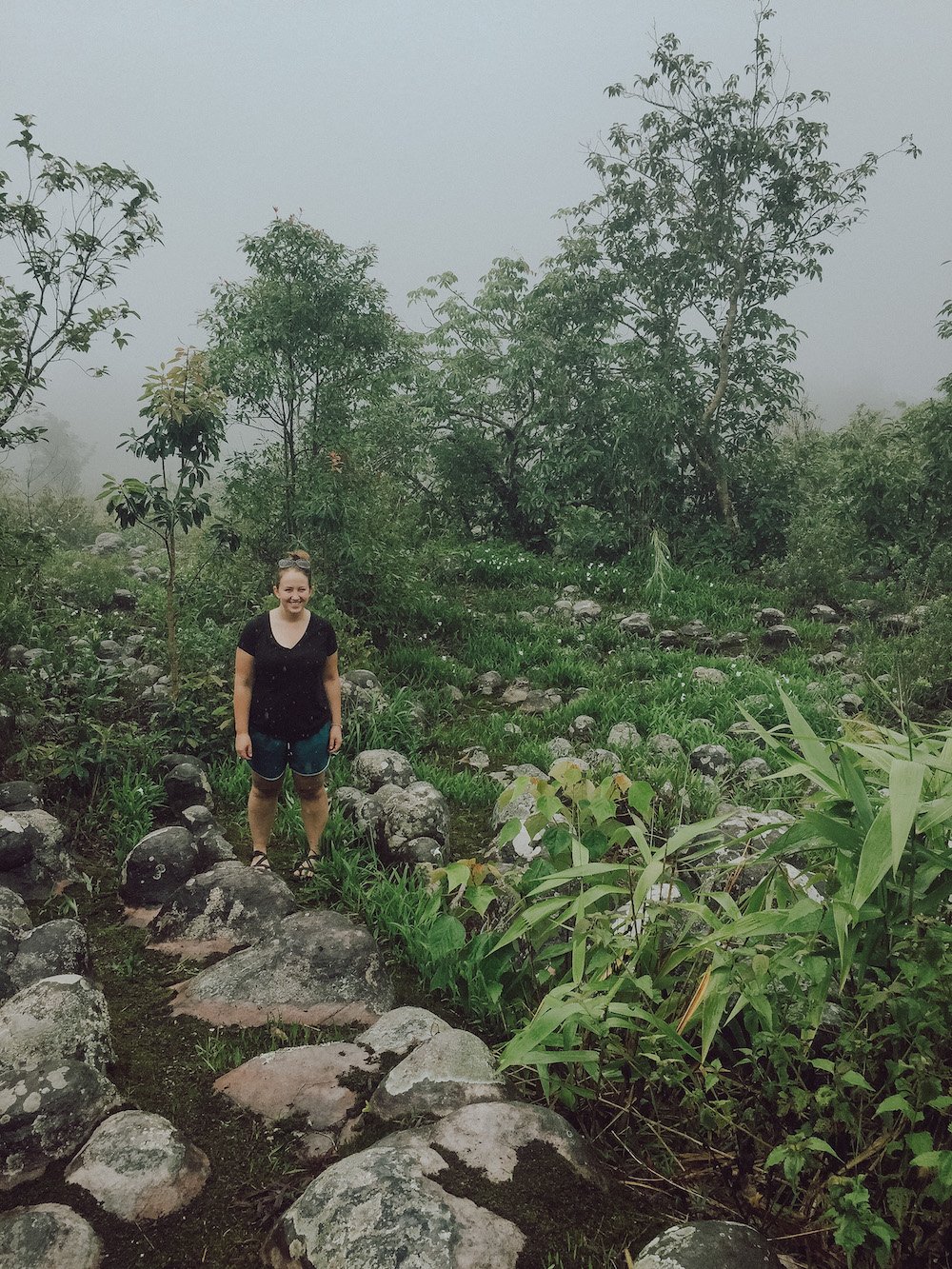
Lan Hin Poom
Lan Hin Poom is the most unique element of the park, whose rocks pull in the most visitors. Situated next to a dramatic cliff, the rock face here is dimpled — almost creating rounded mounds that completely cover the area. It's a bizarre example of erosion that pulls in quite a few visitors (plus, it makes for a dramatic sunset view).
Find the trailhead about a 10-15 minute walk from the park's visitor center (it's a short hike).

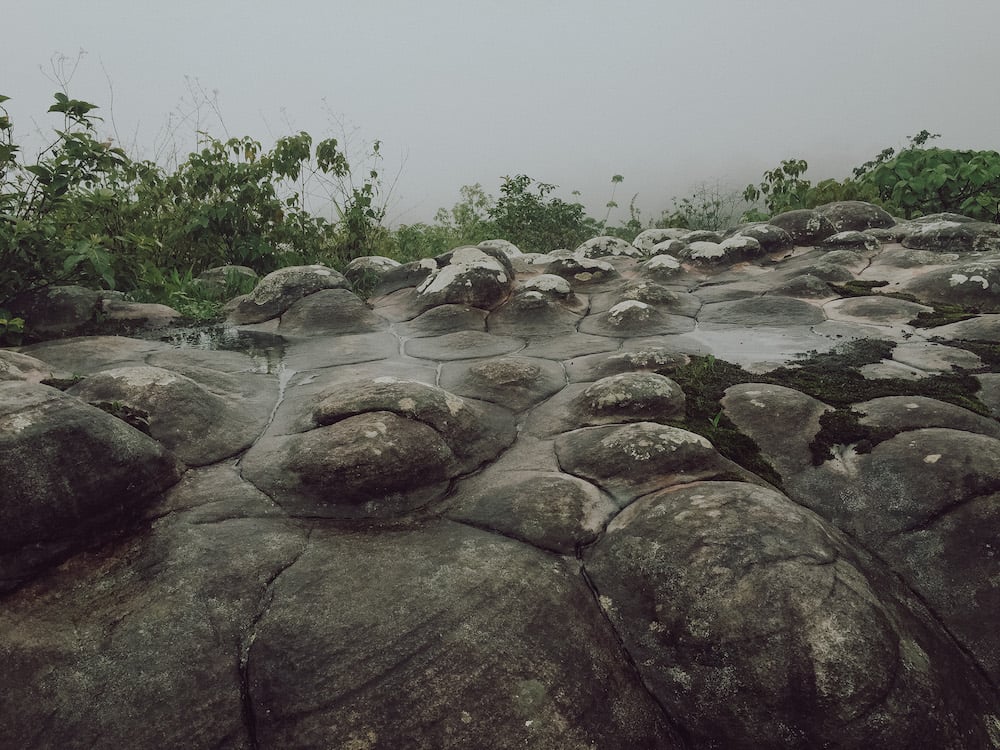
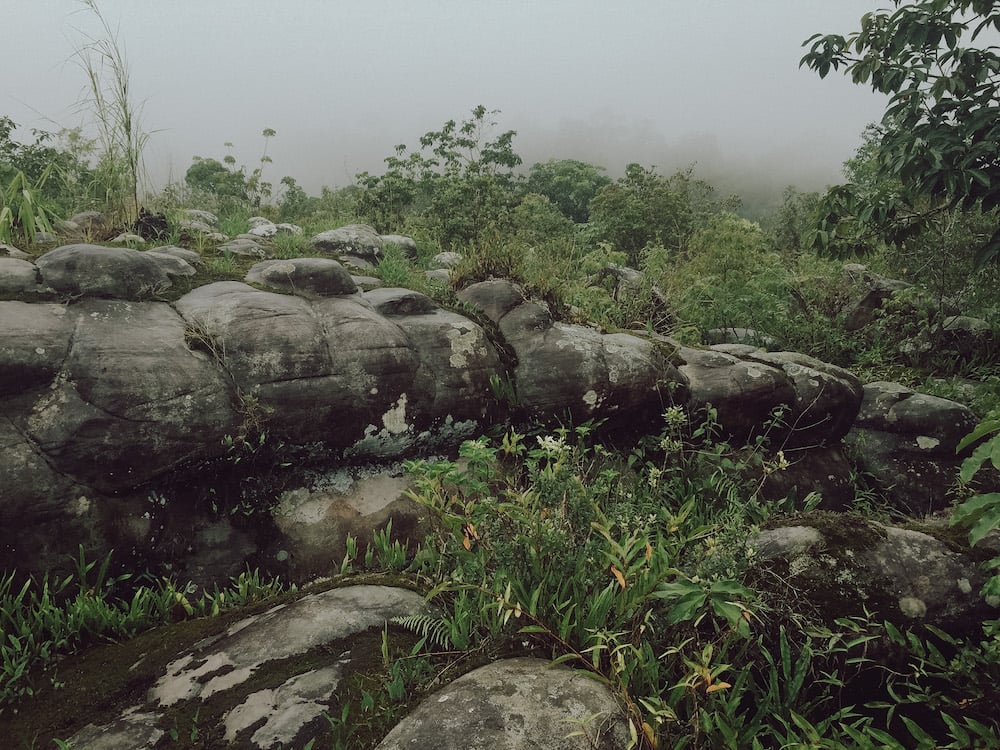
Pha Chu Thong
Another viewpoint boasting stunning views and some history, Pha Chu Thong was where the Communist Flag was displayed. Now, it's a gorgeous lookout point after your hike through mossy ravines, fields (sometimes sporting wildflowers), and quite the sunset lookout if you time your 30-60 minute hike right. The Thai flag has replaced the Communist one, and you'll see it proudly waving at the viewpoint.
Find the trailhead about a 45-minute walk from the park's visitor center (you may want to see if your driver can take you to the trailhead instead of walking there before you start the hike to the viewpoint).
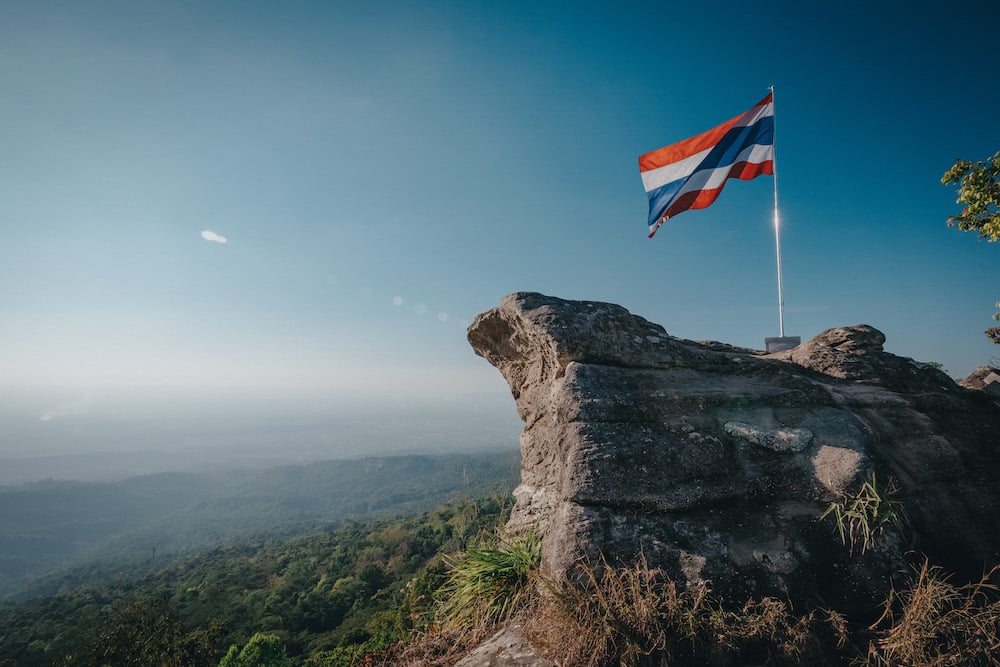
Spotting Waterfalls
There are a few in the park: some are near the visitor's center, while others require a hike to get there. The most accessible are the Namtok Rom Klao-Pharadon waterfalls. Both are fed from the same river but create two separate cascades. Find these — find two falls nestled close by each other pretty close to the Political and Military School.
Get more info about the other waterfalls (and other attractions in the park) here if you're interested.
For Wildflowers
One of the highlights of visiting this park is the pictures, especially the wildflowers. There are a few places that have some gorgeous photos (like this spot: งดอกกระดาษ ภูหินร่องกล้า), or the walk to the Flag Pole Cliff mentioned above (Pha Chu Thong). Early in the springtime and during the rainy season (July - October) are the times to visit for prime wildflower walks.
Getting Here + Other Details
Visiting From Phitsanulok
There isn't a bus that takes you from Phitsanulok to Phu Hin Rong Kla (the closest you can get by bus is Nakhon Thai, but you'll still need to take a 1-hour taxi ride to get there). If you're here as an ILP volunteer, you have the perk of getting some help with transportation options. We've had groups in the past talk with their Local Coordinator about getting a private car or shuttle to take them to places like this — it's about a 2-hour drive.
Hours + Costs
Open 8:00 AM to 4:30 PM (but you can enter the park at any time — it's a popular spot for locals to camp).
Costs are 500 Baht for foreigners (with the chance of a student discount). There is a 30 Baht car fee, which may be applicable if you have a driver take you to the other sites in the park (but as we outlined, it's possible to walk to the main highlights on a half-day trip here).
Come For A Half-Day
This park isn't huge, just a few miles of protected space. As we mentioned, there are walking trails and attractions to see here, making it the ideal spot for an easy day trip from Phitsanulok. You'll want just enough time for a short hike and lots of time for pictures on your visit to Phu Hin Rong Kla.
Supposedly, there are a couple of restaurants near the visitor center if that's helpful to know, but it's quite convenient to just pack some snacks or even your own lunch if you're just here for a half day.
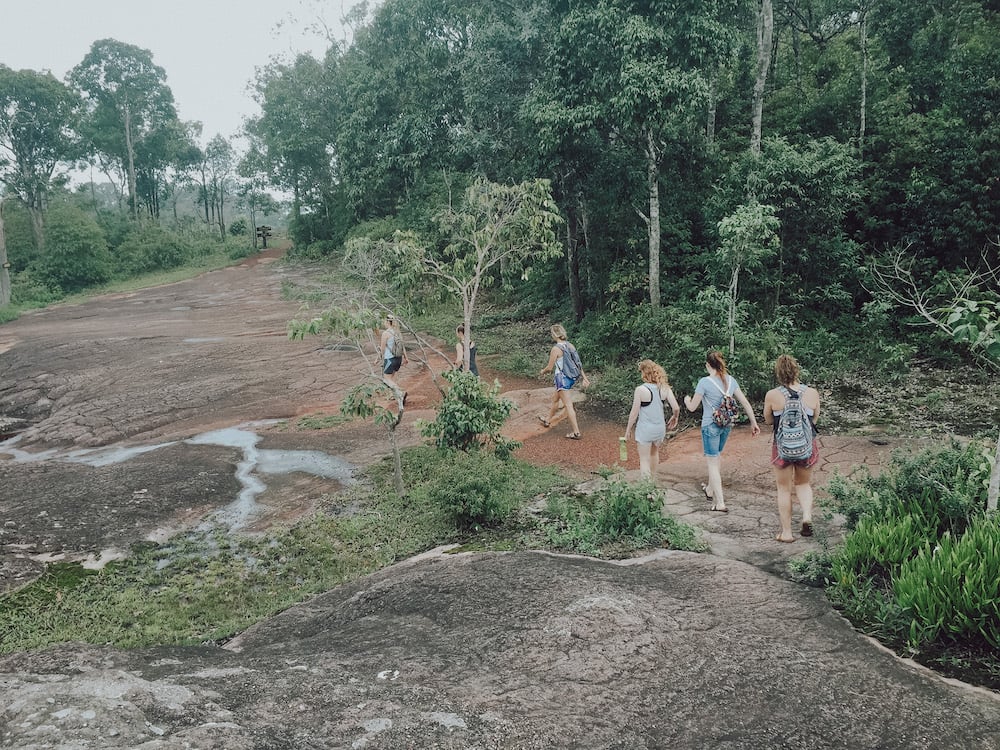
When To Visit
Things can get busy on the weekends and holidays. It's not a big deal, but seeing if you can plan a visit mid-week will be more of a peaceful experience.
Oh, and if you find yourself with a free weekend in the winter months (December or January) you may be able to time your visit with the maple leaves, which turn a stunning shade of red during these months. Find them by the Military and Political School.
A Few Hiking Tips
You'll be hiking in the mountains and because of the elevation, you may enjoy a bit of a cooler temperature than you're used to down in places like Phitsanulok. The elevation helps with the heat, especially if there's a breeze, but know that it's likely to still be quite humid (it's cooler but not sweatshirt weather up here). And of course, things depend on the season — during the spring it can get very foggy and wet, but during the summer and into the fall the sun can beat down on areas that aren't providing protection from the trees.
In March, during the rainy season, there is often a thick layer of fog but even then, we still love the mountain views from the cliffs! The rocky path during the wet season can get very slick from the rain and the humidity, so wear shoes that have a good grip and take it slow. When you reach the cliff's edge, keep a safe distance while you take photos of the stunning views (there are no man-made protections to help keep you from slipping over the edge). And don't forget to bring some snacks and your water bottle and stay hydrated!
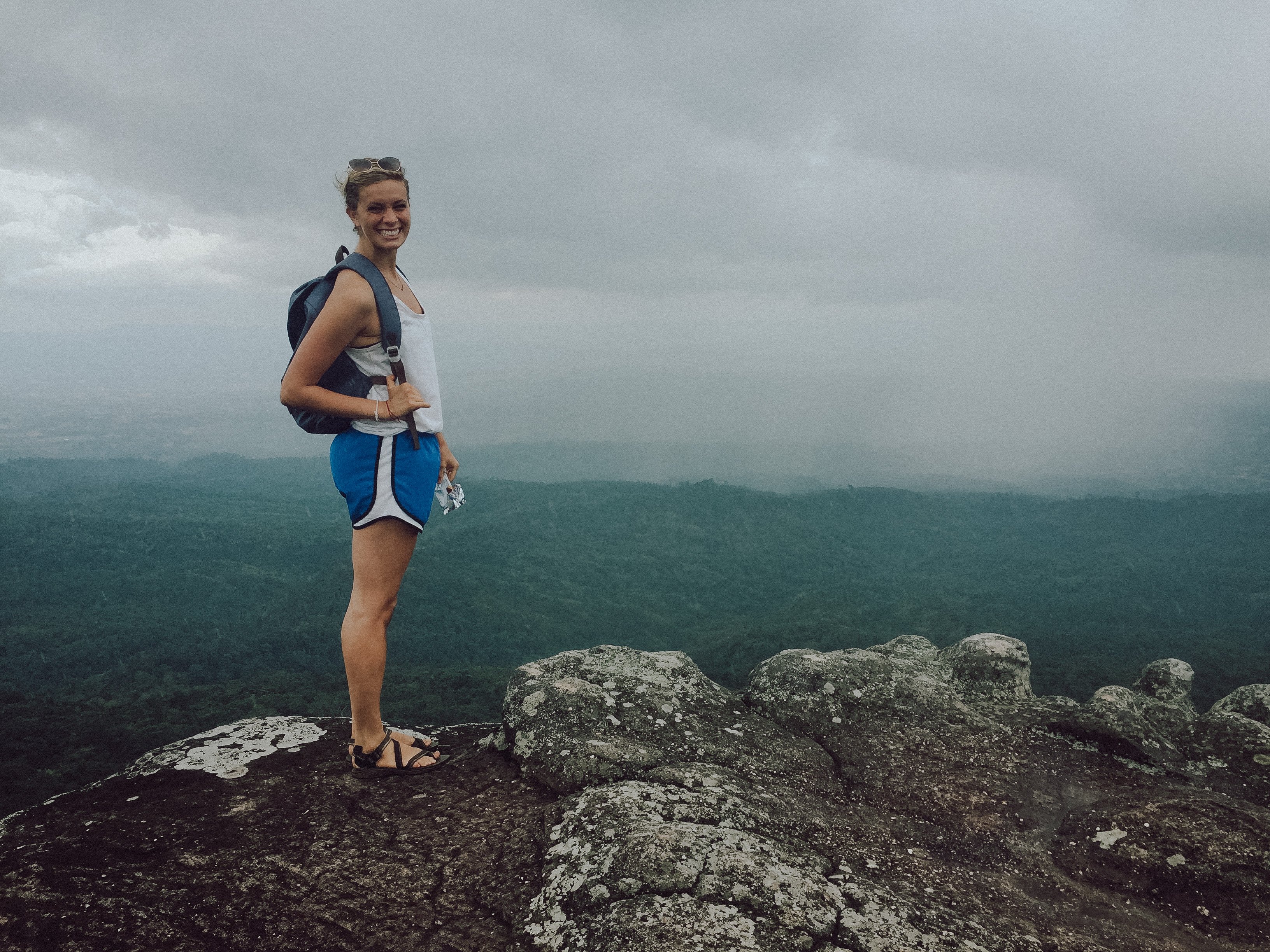
Good news for you!
We're accepting applications to come and volunteer in Thailand! Come see way more than you could in just a short visit as a tourist, and instead live here long enough to check out all the hidden corners of the country (as well as the most popular vacation spots, of course!)


